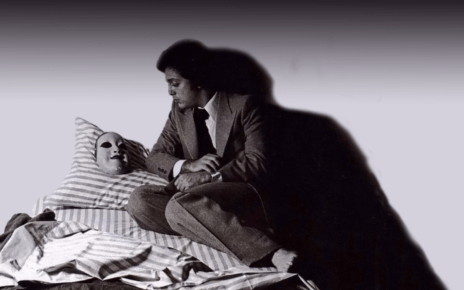If you are a fan of arcade fighting games for their mechanics and design, then you don’t even have to read any further—this game is perfect. If, on the other hand, you care more about its narrative, then there are several factors which may detract from your experience.
“Persona 4 Arena Ultimax” is an arcade-style fighting game, developed mainly by Arc System Works in the style of Atlus’s hit series “Shin Megami Tensei: Persona.” The game itself is considered to be a spinoff within “Persona” because while it is not a core title of the series (like “Persona 3” or “Persona 4”), its events are considered canon to the “Persona” series plotline.
As a disclaimer, I haven’t played a lot of fighting games (three that I recall are “Smash Bros,” “Dissidia Final Fantasy,” and “Injustice: Gods Among Us”). However, with that said, the mechanics, look, and sound of “Ultimax” all appeared to be flawless, and they have been received as such by critics. The difficulty when playing against computer opponents can be easily adjusted (in the context of Story Mode, it can even be automated) so no one should be prevented from enjoying this story by a single tough opponent or difficulty grasping the controls.
However, while I thoroughly enjoyed the gameplay itself, depending on the mode that one plays there is either too much or too little. In Story Mode, expect at most two percent of your time to be devoted to gameplay (it is essentially a visual novel broken up by the occasional short lived brawl). In other modes, such as Arcade Mode, you will find a skeletal story. One of my personal favorites, GoldenArena Mode, removes story entirely, but adds in character progression (you level up, increasing stats and learning or finding abilities). There’s definitely room for improvement, but it’s refreshing to see that sort of mode in an arcade-style fighting game.
The music and cut scenes of “Ultimax” deserve special mention. Although the music probably isn’t everyone’s taste, it is the epitome of its genre (mostly j-pop and j-rock). The same can be said for the anime-style cut scenes. A good measure of whether you like this or not is if you watch and enjoy anime; if you do you probably will like “Ultimax.” If you dislike anime and aren’t an arcade style fighting game enthusiast, you’ll probably want to steer clear of this game. My only criticism is that I personally feel that there should have been more cut scenes (it felt like, and I’m being generous, 15 minutes of them, counting all of the story episodes and the opening).
In regards to the Story Mode, things are a little more complicated. For the most part, “Ultimax’s” story is a passable narrative created to make the cast of “Persona” fight each other (the story is definitely built around gameplay). Although some character development does occur, it’s nothing major (often with the “Persona 3” cast it feels forced). This is an over-the-top anime game, much more so than the “Persona” series it takes place within. The characters include a Power Ranger, a boxer, a dog, a baseball coach, a wealthy company heiress, a high school detective, a teen idol, two robots, a teddy bear, and several “normal high school students” (a cliché within JRPG’s).
I also had a problem with how the story was told. There are two different story modes that come with the game, one from the perspective of the “Persona 3” cast, the other from “Persona 4.” As a whole, although there were some clichés (optimistic tone, friendship conquers all, some stereotypical villains…) I liked the “Persona 4” mode. However, the “Persona 3” mode felt out of place. Both story modes contradict each other at various parts (though this is done purposely). It makes the story as a whole much harder to grasp. How can one tell what actually happened when there are two separate accounts from equally credible sources? Going off of the “True Ending,” I personally feel that the “Persona 4” story makes more sense, so the “Persona 3” story feels unnecessary (also, a bit of a slap in the face to “Persona 3” fans, as the protagonist of Ultimax’s “Persona 3” story wasn’t even in “Persona 3”).
Just as an advisory, there was a prior “Persona 4 Arena” title; its plot is necessary in order to understand this one, and I personally thought that it was superior in terms of story. Thankfully, it can be purchased as DLC for $10 (in my opinion a very fair price). Also, if one purchases the “Adachi” DLC for $5, it will unlock a new fighter along with an extra story mode (it’s shorter than the other two, but the plot is, in my opinion, much better). There are two other DLC characters (Marie and Margaret) for $5 each, but unfortunately they only add fighters into the game and not narrative.
As a whole, I found “Persona 4 Arena Ultimax” to be very enjoyable. As far as the arcade-style fighting game genre goes, there is nothing that I would recommend over it. As a general score within its genre, I’d give this game a 9/10. If you’re a “Shin Megami Tenshi: Persona” fan, however, and are here for the story, I would label this a good fan service, but nothing exceptional (and as such would score it at 8/10).



